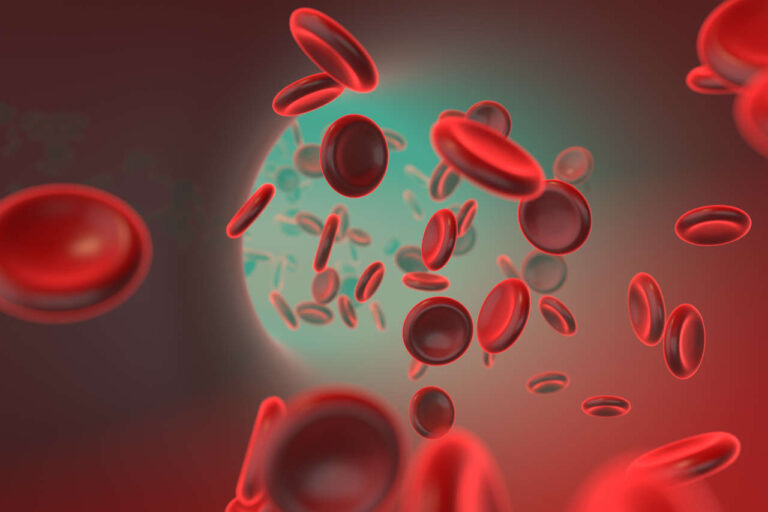
Intravenous immunoglobulin (IVIG) is a safe and effective FDA-approved treatment for CIDP. Chronic inflammatory demyelinating polyneuropathy (CIDP) is a long-term chronic neurological disorder that worsens over time and affects around 5 to 7 out of 100,000 individuals.
Get Your IVIG Dose
At-Home InfusionIn CIDP, abnormal immune cells attack healthy cells, specifically the myelin sheath of peripheral nerves (neurons). This attack can lead to functional disabilities, such as muscle weakness, slow nerve conduction, and loss of sensation in patients.
There is no specific cure for CIDP. However, doctors have prescribed IVIG for CIDP over the last two decades as a first-line therapy to ease its symptoms and lessen complications.
Below, we will discuss the benefits of IVIG treatment for CIDP. We will also explore its mode of action and review the studies assessing its efficacy to help you better understand the benefits of IVIG for managing your condition.
IVIG Mode of Action
In IVIG therapy for CIDP, healthy immunoglobulins (antibodies) extracted from donor plasma are infused into the patient’s veins. These healthy antibodies prevent the immune cells from attacking and destroying the myelin sheath of peripheral nerves.
The working mechanism or therapeutic effects of IVIG for CIDP are not precisely known. However, scientists believe that different modes of action are involved. Here is an overview of the possible mechanisms.
Neutralization of Pathogenic Autoantibodies
IVIG solutions contain antibodies that can bind to and neutralize autoantibodies that attack the myelin sheath, the nerve’s protective coating. This mechanism of action reduces the presence of harmful autoantibodies, minimizing immune-mediated damage inflicted on the peripheral nerves.
Modulation of the Immune System
CIDP patients receiving IVIG treatment can expect modulated immune activity. IVIG regulates the activation and function of immune cells like B and T lymphocytes, which are central to the body’s defense system.
By regulating these cells, IVIG lowers the production of autoantibodies and restores balance to an overactive immune system.
Suppressing Inflammation
The anti-inflammatory properties of IVIG for CIDP may be mediated by its interaction with pro-inflammatory substances. Inflammatory mediators like cytokines and chemokines are involved in the inflammation process. By dampening their signals, IVIG may help suppress inflammation.
Fc Receptor Blockade
IVIG can block Fc receptors on immune cells which are involved in inflammation and can contribute to nerve damage.
This blockade helps reduce the activity of these immune cells, further mitigating the inflammatory response and protecting the myelin sheath from additional injury.
Anti-complement Activity
Another proposed mechanism of IVIG for CIDP disease involves its interference with the complement system. This system is part of the immune response that can exacerbate inflammation and nerve damage.
The ability of IVIG treatment to disrupt harmful complement activation in CIDP disease might reduce tissue injury and enhance nerve protection.
Upregulation of Inhibitory Receptors
Using IVIG therapy for CIDP disease may also cause an increase of specific inhibitory receptors such as FcγRIIb. These receptors help inhibit excessive activation of immune cells, thus decreasing inflammation and promoting a more balanced immune response.
Standard IVIG Dose for CIDP Patients
Based on several clinical studies, the standard IVIG dosage for CIDP treatment is 2 g/kg or (20 ml/kg) with an infusion duration of 3 to 5 hours.
This initial loading dose is administered intravenously for over 2 to 5 days, followed by a maintenance dosage of 1 g/kg or (10 ml/kg) over 1 day every 3 to 4 weeks.
IVIG Dose Adjustments
In some cases, the standard IVIG dose for CIDP may be ineffective for some patients. Therefore, higher doses or more frequent IVIG infusions are often considered to achieve effectiveness.
For instance, in a case study of a severe and persistent CIDP, patients who don’t respond well to the standard dose can be treated with a higher IVIG dose of 3 g or 30 ml/kg/month for five consecutive days.
However, the next dose could vary depending on the patient’s health status, degree of treatment response to immunoglobulins, and improvement in CIDP symptoms.
Get IVIG Copay Assistance
IVIG Financial AssistanceIVIG Treatment Protocols and Administration for CIDP
Administering IVIG for CIDP is a straightforward process. The administration of IVIG therapy for CIDP typically involves the following steps:
- The healthcare provider prepares the IVIG solution according to the prescribed dosage.
- The patient is comfortably seated or lying down for the infusion.
- An intravenous (IV) line is inserted into the patient’s vein.
- The IVIG solution is slowly infused over 3 to 5 hours.
- Vital signs are monitored throughout the infusion for any adverse reactions.
- The infusion rate may be adjusted based on the patient’s tolerance.
- After completion, the IV line is removed, and the patient is observed for immediate side effects.
- A follow-up appointment is scheduled to assess the efficacy of IVIG for CIDP and adjust future doses if necessary.
IVIG Success Rate in CIDP

The main goal of IVIG for CIDP treatment is to substantially reduce the patient’s symptoms, improve their body’s functional ability, prevent relapse, and maintain long-term remission.
Unlike standard CIDP treatments, such as corticosteroids and plasmapheresis (plasma exchange), IVIG has a more rapid response and high success rate. Improvement in CIDP symptoms can be seen within one month after IVIG infusions.
Research Findings on IVIG Treatment for CIDP
Several clinical studies have reported successful results with IVIG for CIDP. Let’s examine each of these studies and their findings.
Significant Improvements in Functional Disability
A randomized controlled trial conducted on 117 individuals demonstrated that 54% of the patients receiving IVIG therapy for CIDP showed improved functional disability at 24 weeks compared to the placebo rate of 21%.
This trial used the adjusted Inflammatory Neuropathy Cause and Treatment (INCAT) disability score to gauge improvements. Significant muscle and grip strength were observed among those treated with IVIG.
Moreover, 60% of patients showed maximal IVIG response by 6 weeks. These findings indicate that early intervention with IVIG is essential for CIDP patients to maximize symptom improvement.
Systematic Review Confirms IVIG Efficacy
In another comprehensive analysis, a systematic review of five clinical trials conducted on 235 CIDP subjects also highlighted the benefits of IVIG treatment for CIDP.
This review found that those receiving IVIG therapy for CIDP experienced consistent improvements in their disability scores within six weeks of treatment initiation compared to those on placebo.
The analysis underscored IVIG’s potential as a first-line treatment option, particularly for chronic cases, with evidence highlighting its sustained benefits even at 24 weeks post-therapy.
Based on these clinical findings, IVIG is an effective and well-tolerated treatment with promising results in treating CIDP. IVIG can also be a long-term option for CIDP with its low rate of long-term side effects.
Can IVIG help?
Free IVIG Treatment InfoPotential Side Effects of IVIG Therapy
IVIG therapy is generally safe and effective. However, it may have potential side effects. While most side effects are mild and manageable, being aware of them is crucial for those undergoing treatment.
Here are the most common side effects of IVIG treatment:
- Nausea
- Fatigue
- Flushing
- Headache
- Muscle aches
- Fever or chills
- Abdominal pain
- Chest discomfort
Long-term Side Effects of IVIG
In rare instances, IVIG therapy can lead to more severe side effects, particularly with long-term use. Long-term side effects of IVIG for CIDP may include:
- Increased risk of blood clots (thromboembolic complications)
- Kidney injury, especially in older patients or those with pre-existing conditions
Managing the Side Effects of IVIG
Managing the side effects of IVIG treatment for CIDP disease is achievable through various strategies. Many find that consistent communication with their healthcare provider and preemptive measures can improve their experience.
Some effective management strategies include:
- Hydration: Drinking plenty of fluids before, during, and after treatment can help minimize side effects.
- Slowing Infusion Rates: Adjusting the infusion rate of IVIG for CIDP can reduce the risk or severity of complications.
- Premedication: Taking over-the-counter medications like acetaminophen or antihistamines before the infusion can help alleviate mild symptoms.
- Monitoring Symptoms: Tracking reactions during and after IVIG therapy can help your healthcare provider make necessary adjustments for CIDP treatment.
- Comfort Measures: Resting and using heating pads or cold packs may ease discomfort during and after the infusion.
Always consult your healthcare team for personalized strategies based on your unique situation.
Cost of IVIG for CIDP

The cost of IVIG treatment for CIDP can be significant, often ranging from $100 to $350 per gram. On average, total treatment costs can amount to approximately $9,720 annually.
Various factors contribute to these expenses, including the specific brand of IVIG and dosage requirements. Understanding the financial implications of IVIG therapy can help you plan accordingly.
Receive At-Home IVIG Therapy for CIDP from AmeriPharma® Specialty Pharmacy
Managing CIDP can be challenging, but IVIG treatment makes it possible. IVIG offers a proven approach for easing symptoms and improving patients’ functional abilities. With a well-established treatment protocol, patients can find relief and improve their quality of life.
If you want to receive at-home IVIG infusions for CIDP, AmeriPharma® Specialty Pharmacy can help. Our URAC-accredited specialty pharmacy provides home infusion services in over 40 U.S. states and territories.
Contact us today to talk to a specialist and receive treatment with full-service coordination, copay assistance, and 24/7/365 support.













